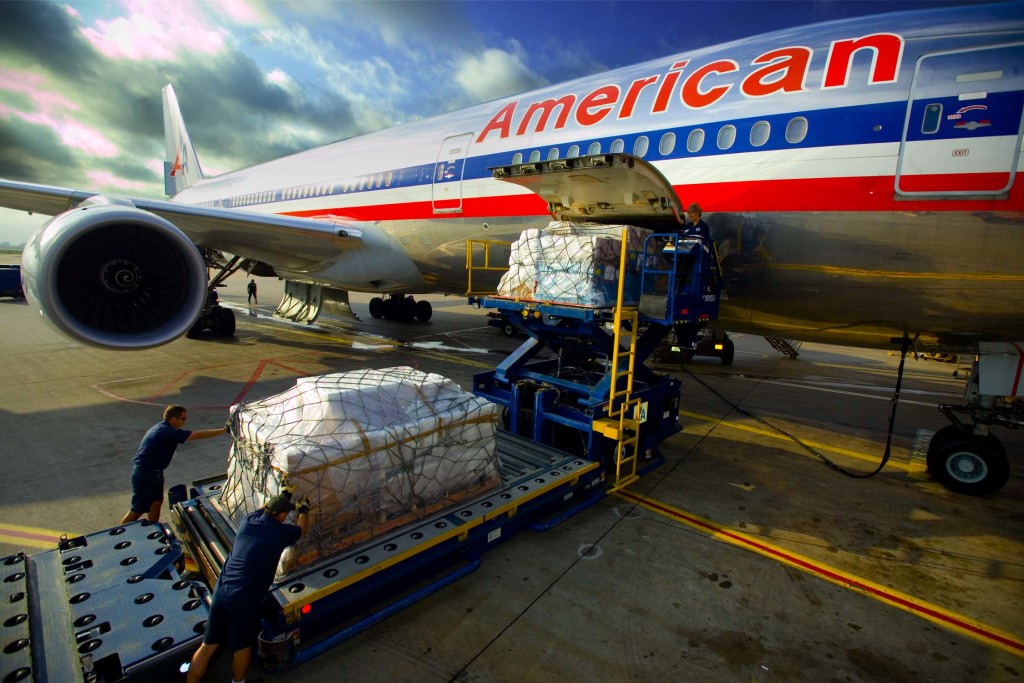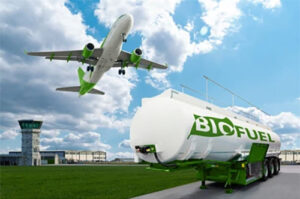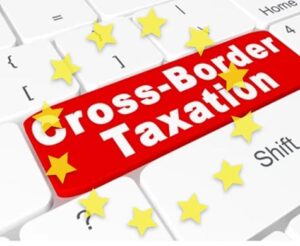This article explains what’re the method of Air Freight and Courier to import goods from countries around the world (such as China, Taiwan and the United States) within the European Union by the airport of Spain.
The method of Air Freight is one of the most popular methods of import of goods from countries outside the European Union within the Community. New importers in this field often do not understand the difference between “Courier” and “Air Freight“. In this post we look over those concerns and explain why it is a good idea to send your goods by air rather than sea. Key issues you could avoid sending cargo by air and some strategies to reduce costs by using courier or air-freight.
Difference between Courier service and Air Freight
Before getting into the more complication of choosing between air and sea, or between messaging and cargo: It is important, we look at the difference between the “Courier Service” and “Air Freight“.
How do they differ from each another?
Courier, also known as “express” is basically a “door to door” where the courier company send their goods from point A (normally suppliers or consolidators from the address of the origin country) to point B (The address of the destination country).
They manage all the necessary processes to successfully deliver goods from A to B, ie, pickup and delivery, customs procedures at origin and destination, payment of taxes and duties (They will bill these charges apart from the shipping price itself), etc.
Popular Courier companies are: DHL, FedEx, UPS and TNT.
On the other hand, the Air Freight service is from “airport to airport” unlike the courier service is “door to door”.
This means that the carrier is responsible for the goods after they have been cleared customs duties at the airport of origin and the deliver those goods to the destination airport. A ‘forwarding‘ agent is required to clear the goods at the office of destination and takes good to the delivery address.
Let use an example to understand better.
Suppose you want to buy a particular commodity in China and sent to Spain for sale.
If we select Courier service, the goods will pick by the carrier in China, would be responsible for clearing the goods from the Chinese Customs and all customs formalities at the port of EU. Finally, the use of the courier service is from input point sends the goods to the destination in Spain.
If we go for Air Freight, the goods will collect by the carrier at the airport in China till the EU airport, this will end up his role. Here where “Forwarder” takes place his role, who will take care of customs clearance and send the goods from the destiny port to the destination address (final destination).
Many large courier companies such as DHL and FedEx, as well as passenger airlines provide “Air Freight” services. Most passenger airlines have space to accommodate commercial cargo and this explains roughly 10% of their income.
When it could be better option to send goods by Air?
The decision to deliver their goods using a service or through air cargo shipping is a function of three key factors, known by, the volume of goods, weight of goods and the value of their merchandise. Use Air freight is usually a good idea in the following cases:
– To send goods samples.
– For high-value goods
– Low volume products (not too heavy), for example, tablets, watches, phones, importing clothes etc.
– When goods are sensitive with the passage of time, perishables or urgently needed (air shipping usually takes less period than sea).
So the most frequent question arises here is, what volume of merchandise is better to ship by sea rather than by air? This depends on a number of factors such as the rate of “Air Freight” for the week (the rate changes every week) and the actual weight of the goods.
However, once the mark of 1 CBM crosses you can start seeing LCL sea shipping as a viable option.
Courier and Air Freight: Calculations
We often meet importers, including experienced importers that are usually confuse about how to calculate the costs of Courier service and Air Freight. When Forwarder use kilograms base, usually refers to the cost per kg of “chargeable weight“.
The “chargeable weight” refers to the higher value of two, the actual weight of the goods or its volumetric weight. Volumetric weight (also known as “dimensional weight“) is calculate by multiplying the dimensions of the packaging of the goods (for example, the dimensions of the box) and dividing by the “size factor“.
At this point there is a great confusion, as importers often ask the weight of the goods to the supplier and on the base on that weight make the price calculation, So it’ll be the big surprise that actually shipping was more expensive, as the importer, he is charging the price on the highest of the above mention two weight. The Forwarder will charge on the volumetric weight, which is not the actual weight of the goods.
Further more, the formula for calculating the volumetric weight for shipments “Courier” is different from “Air Freight“, as the “dimensional factor” for the Courier usuario this factor is 5000, whereas for the Air Freight is higher and its 6000 or more.
This is where most of the importers can fail even the experienced importers when trying to decide between Courier and Air Freight as they use the same weight to compare the two options.
Let us illustrate these explanations with an example:
Product: Android Tablets
Quantity: 500Pcs
No. of cartons: 10 Carton
Dimensions (cm): 80 x 50 x 40
Total current weight of 10 cartons: 200kg
Volumetric weight (Courier): ((80x50x40) / 5000) * 10 = 320kg
Volumetric weight (Air Freight): ((80x50x40) / 6.000) * 10 = 267Kg
Here you can clearly see that the dimensional weight exceeds the actual weight, so the Courier / Forwarder invoice is base on that rather than the actual weight.
In this case, would more economical to ship by Air Freight rather than Courier, but there are more factors to consider, such as additional charges for customs processing.
Important concern: The current courier companies use advanced laser scanning machines to calculate the volume of the boxes. This means that even a small bump in cartons can lead to a significant difference in volume. We must ensure that the packaging will in optimal conditions to ensure, it will not increase our cost.
Also, if the boxes have some sort of lump, depending on the nature of the products and packaging, you can also jeopardize the safety of goods in transit and therefore, this should be one of the points in your list of Control quality for pre-shipment inspection of goods.
Courier vs. Air Freight – Which could be best option to choose?
So, how do you decide between Courier and Air Freight? As with marine cargo, there is a fixed cost of processing at each customs fees carrier, and domestic road transport, hence the use of messaging is usually recommended when it comes to smaller packages and samples .
Continue with the above example, let’s say we’re importing goods from China to Spain and quoted price is € 5 / kg for the carrier and € 4.5 / kg of air cargo, so their costs would be:
Door to door transport company: € 5 x 320kg = € 1600
Air Freight 267Kg x = 4,5 € = 1200 €
There is a reason why importers are confusing to compare these figures. Assume that we have bought products based on EXW, in this case, the total cost of Air Freight would have to pay would be for:
– Freight / National transport from the factory to the airport.
– Customs clearance and costs forwarder in China and in Spain.
– Freight / Airport Spain entrance to the final destination domestic transport.
Let’s assume that these costs are € 300 in China and 450 € in Spain, which makes a total of € 750. So now our options are:
Courier: € 5 x 320kg = € 1600
Air Freight 267Kg = 4.5 € x = € 1,200 + € 750 = € 1,950
In the above scenario, Courier is clearly the best option. In addition, another important consideration is that the Courier is almost always the fastest option unless you have chosen one of those super slow courier services that tend to be cheaper and the package is on the world tour for 7-10 days before arrival to your destination.
Therefore, the key question is, At what point the Air Freight is cheaper than the Courier? From our experience of sending more than 1000 shipments from Courier service and Air Freight from third countries to the EU in recent years, it seems that in most cases, around 400-500Kg dutiable weights. The “total cost” the Air Freight is becoming cheaper than using Courier.
For weight below the mark 500Kg, use Courier is also simpler than the Air Freight option, plus you will not have to worry about any procedure, which means you can use that time to focus on other matters of your business.
Key points to consider when it comes to sending goods by air:
- Damage in transit:
When sending goods by air, it is very important to follow strict guidelines in terms of packaging and also inform the provider about such guidelines to be met when we made a shipment, to prevent damage of the goods. Care should be taken as how the packaging should be use to protect the product and the quality of the cardboard boxes. We get inform by many cases where goods were in perfect condition when they left the factory and came with a thousand of damages to the warehouse of the importer.
- Damaged goods: Why is this happening?
Courier companies handle thousands of deliveries every day, and especially when a product comes from a far country usually passing from or staying at different destination. Not all packages carefully treat, although posted by the big stickers ‘Handle with care‘. Cases included: they throw packages or may be stacked putting heavier packages above the packages or often shuffled during the journey, carriers may be fall down boxes while lifting up or getting out of transport and even we have got cases. Many boxes have trampled.
In packaging, especially cardboard quality used is one area where suppliers try to cut down to his reduce costs. Therefore, we must be vigilant and demand quality and packing according to the goods we will send our supplier.
- Surprises, which could cost expensive
For some reason I’m still trying to understand, in the supplier’s factories and very specifically in China, often miscalculate the correct volume and weight of the goods, especially before they have produced the goods. This is a constant subject of struggle for us, especially when working with new factories.
- An unpleasant surprise
You might think that a factory produces a standard product and delivers frequently. Perfectly dominates the calculation of volumetric weight, but often there is a difference in the “volumetric weight” information from the factory to the customer and the measurement of the courier company. This usually leads to an expensive surprise when the importer receives the bill for the Courier Company or forwarder.
- FOB and Exwork
To obtain an estimate of B2B websites, Supplier often quote the FOB value. However, importers often end up receiving their merchandise by Courier or collecting goods from several importers and receiving all of them from one platform.
This means that, normally, suppliers include in base of Exwork the rate of customs charges, but now it is no longer necessary to do this. Many importers in these cases end up overpaying for logistics.
For all this, it is important to search and decide the logistics plan before. If you’re thinking about consolidating the goods or use a courier service, it is best to use a quote of EXM rather than FOB.
- Risk of Steal of goods
There is always a small risk of theft by choosing Air Courier as the goods pass through several hands. This is something that applies to LCL ships. Our experience over the years has been that this risk is quite small in China for example, and we see more cases of robbery in the “developing countries” in the destination port, unlike developed countries.
- Changes in the prices
Many importers ask us transport cost (rates) for a shipping that will be effective in future. We have to make it clear, in such cases; the rate is only valid for the current week. This is because the rates are updated weekly, mainly due to “Fuel” that is linked to oil prices.
Therefore, you should always get a new rate for the shipment once their products are ready to be sent and along this should to reconfirm the volume of goods. This will also help you avoid surprises cost and can often be good news if rates decline in that period.
Smart strategies to reduce costs when importing by air:
Sometimes making small changes in products and packaging can significantly reduce transportation costs.
- Fully Utilize carton space
Leave empty space in cardboard boxes (or containers) it is almost a crime when it treats as international trade. Leave space in LCL shipments may not pose a big impact on the margin, but shipments Courier air; this can get to eat your margin.
To avoid this, you should make sure to give specific instructions for packaging to your suppliers and make sure no space will be wasted.
Aside from the benefits in terms of cost to do this, this also helps minimize damage during transport as cardboard boxes with space are often damaged because they usually put heavy boxes on them during the transit to the warehouse.
- Package Design
The design of the product packing is also very important. Some big brands such as Apple, usually design packing for their products larger than the product itself, with the free space inside, with an attractive and creative design. However, more the packaging is heavier than more the space will be use and the higher the logistic costs, so it is important that the product packaging is as tight as possible so that the cost of transporting will not absorb your profit margin.
- Product design
The above concept can also be applied to product design, although this might not always be feasible for smaller importers. Be creative with things like the type of charger used or the size of an accessory, all these can help to reduce the size of the package, which will result in greater savings in logistics costs.
- Types of Courier Services
When using messaging services there are plenty of services that many importers are not aware of that can help reduce costs significantly. We are not referring to the choice of transport companies, as each one has their prices, services and different routes.
Courier companies offer big discounts with large volumes (Economic of scale), therefore, it can be more expensive to go directly to the carrier.
We Spainbox for example, to have agreements with different transport companies with different services, pricing and routes, we can offer a more personalized and economical service with various value added services: such as the fastest delivery and more economic price.
- Price bands
Price fixing in the transportation industry is often on the base of the price band. This mean, if you have provided a estimated price for a shipment of 200 kg of 5 € / kg and are about to make 4 shipments per month, if you could make only one shipment per month of 800 kg you would have access to a lower price.
You will find that this subject repeats everywhere when it’s international trade, recommend, try to increase the volume to reduce your “per unit cost“.
In conclusion…
Choosing the right shuttle in the right situation is not easy and has details that sometimes even the most experienced importers know or have in mind. Therefore, keep in mind that, when in doubt, it is best to consult the professionals like us who can advise you better and with greater depth about your particular case regards different products and shipments, which require different solutions. In short, keep in mind, make small changes to the product and packaging, pre-planning and understanding the numbers and calculations can obtain significant savings in logistics costs, which ultimately will increase your margins.
Of course, if you have any questions concerning the international carriage or you want to consult us about your particular case, don’t hesitate to contact us, we always there for you.







